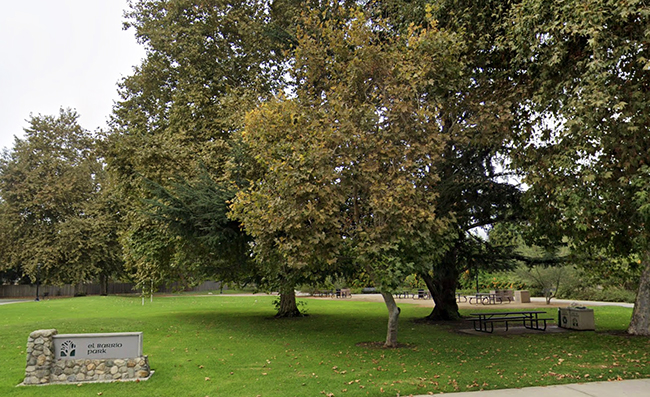Building Claremont, the early years
by John Neiuber
Good architecture speaks to us. It fills one with awe. No matter how many times I see an iconic work of architecture, I get the same wonderous feeling, as if I am seeing it for the first time.
Whether I am gazing at the Chrysler Building in New York, Disney Concert Hall in Los Angeles, the Eiffel Tower in Paris, the foyer of the Gamble House in Pasadena, the lobby of The Rookery in Chicago or the interior of the Library of Congress, I am always moved and astonished.
Architects have long held that the places we inhabit affect our thoughts, feelings and behaviors. Recently, behavioral scientists have given the hunches of architects some empirical basis. Some findings include: 10-foot high ceilings tend to make people think more freely; views of natural settings improve focus; different colors affect mood and outlook; dim lighting helps people loosen up.
Works of architecture in Claremont inspire me constantly—Padua Theatre, the Garner House, The Wright-Darling House, the Sumner House, Little Bridges, the Claremont Depot, the Horizon House, the vista of Bridges Auditorium or the Carnegie Library across the Marston Quadrangle at Pomona College, and on a daily basis, the architectural details of my own 1908 home.
The architects who practiced in Claremont left us with a legacy that has defined a city, a people, a culture and a community. Stephanie Meeks, the president of the National Trust for Historic Preservation, in her book, The Past and Future City, identifies the draw of places like Claremont: “Time and again, when asked why they moved to the city, people talk about the desire to live somewhere distinctive, to be some place rather than no place.”
In the April Claremont Living edition of the COURIER, my column explored the contributions of mid-century architects in making Claremont “some place rather than no place.” This month we will begin looking at the early years.
Franklin P. Burnham
The year was 1908, and the community saw the first of two noted architects’ influence on the built structure of the city. The iconic, Classical Revival style Carnegie Library, located at Pomona College on College Avenue, is one of the most recognized, photographed and beloved buildings in Claremont. The building was designed by Franklin Pierce Burnham.
Born in Rockford, Illinois in 1853, he originally practiced in San Francisco, but later moved to Chicago and entered into a practice with Willoughby J. Edbrooke. Together they won a competition to design the Georgia State Capitol in 1885. Burnham and Edbrooke designed the Seventh District Police Station in Chicago that still stands today. Burnham also designed Mecca Flats in Chicago, an apartment building that held almost 500 residents, and was designed in an unusual U-shape that allowed for a central courtyard. This courtyard design would become the template for Chicago apartment design over the next few decades. Burnham contributed the Cold Storage Warehouse for the 1893 World’s Columbian Exposition. The partnership ended upon the death of Ed Brooke in 1896.
Burnham would move back to California where he designed 12 Carnegie libraries, nine on his own and three as part of the firm of Burnham and Bliesner. Three of the libraries he designed are still standing today—Claremont, Colton and Oxnard, the last two of which are on the National Register of Historic Places.
Burnham was also commissioned to design the Riverside County Courthouse in 1903. He designed San Diego’s first skyscraper, the 12-story First National Bank of San Diego, in 1909. Five of his buildings are today recognized by the National Park Service on the National Register of Historic Places, including the Georgia Capitol, a National Historic Landmark.
Myron Hunt
It was 1908 that also saw one of the most influential architects of his time come to Claremont via Pomona College. Myron Hunt was commissioned by the trustees to design the campus plan and would, later that year, design his first building for the college, Smiley Hall. He would go on to design the beautiful Mabel Shaw Bridges Hall of Music, “Little Bridges,” in 1915, and Bridges Auditorium, “Big Bridges,” in 1931.
Hunt was born in Massachusetts in 1868, but grew up in Chicago, where he attended Northwestern University and then returned to Massachusetts where he graduated with a bachelor’s in architecture from MIT in 1893. After spending three years in Europe, he returned to Illinois where went to work as a draftsman in the local office of the Boston firm of Shepley, Rutan and Coolidge. He is mentioned in the writings of Frank Lloyd Wright along with other architects of the era as an early member of the Prairie School.
In 1903, he moved to California and entered into a partnership with Elmer Grey in Pasadena. Together they designed such well-known structures as the Mount Wilson Observatory and Complex, Montecito Hot Springs Hotel and the Throop Polytechnic Institute campus plan, which would become the present-day California Institute of Technology campus in Pasadena. They also designed a new wing for the Mission Inn in Riverside.
From 1910 to 1920, he practiced on his own and was responsible for the designs of the Ambassador Hotel, the Huntington Hotel, the Huntington Mansion, the Huntington Library and the master plan for Occidental College, where he remained the principal architect until 1940.
In 1920, Hunt established a practice with his longtime draftsman, Harold Chambers. In addition to Bridges Auditorium in 1931, locally they designed the Red Hill Country Club in Rancho Cucamonga in 1922, and the Redlands Community Hospital in 1927. During this time, their other works included the Pasadena Central Library in 1924, the Huntington Memorial Hospital in 1940 and the Rose Bowl in 1922.
Next month we will we further explore the early years of building Claremont. The built environment is one of the ways that connects us to where we live. It is about belonging, about community, about linking us to our past, about being a citizen of Claremont—it is about being some place.








0 Comments